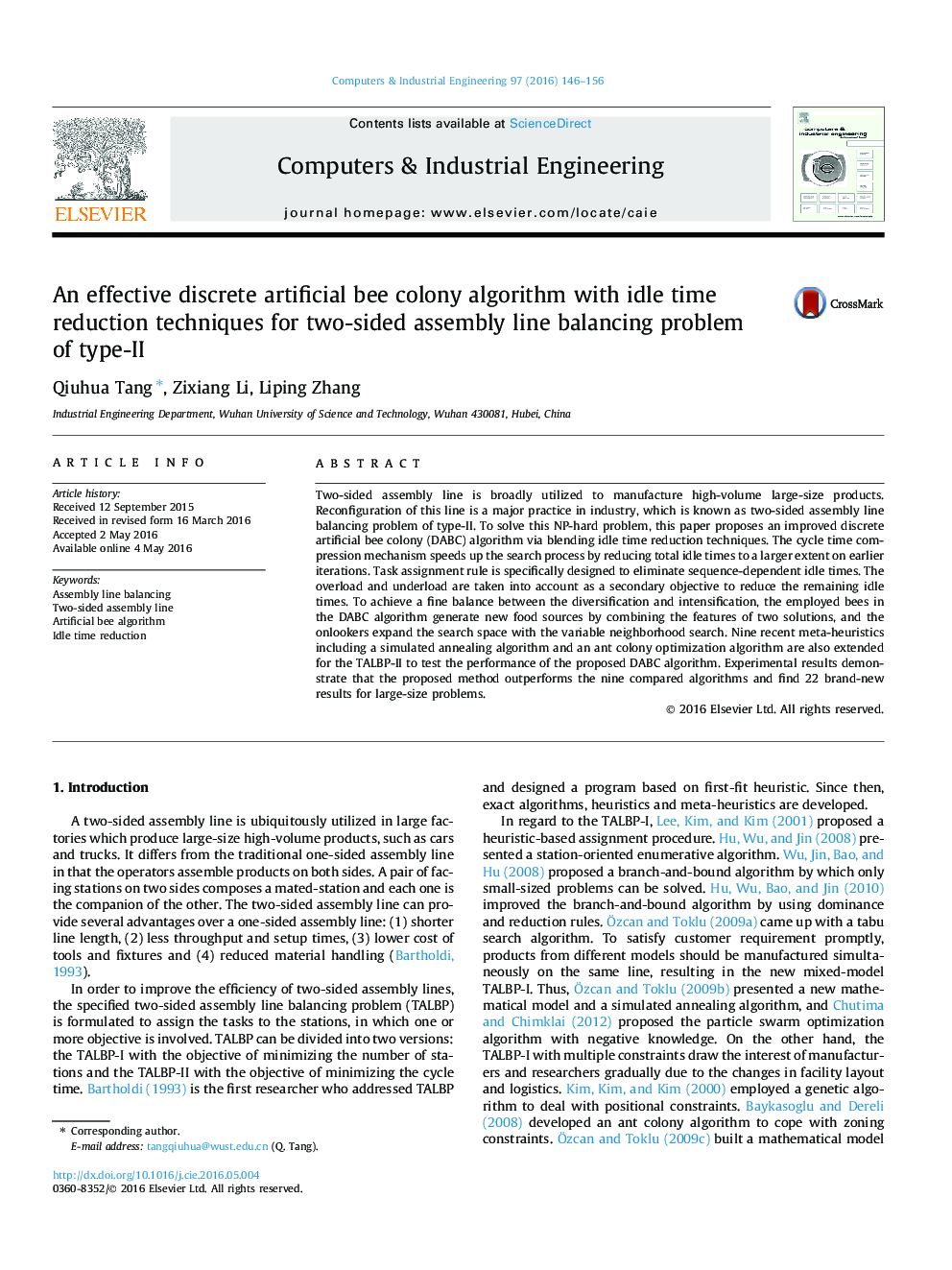| Article ID | Journal | Published Year | Pages | File Type |
|---|---|---|---|---|
| 1133197 | Computers & Industrial Engineering | 2016 | 11 Pages |
•Idle reduction techniques are induced to reduce search space.•Task assignment rule reduces sequence-dependent idle time and balances the workload.•Nine algorithms are extended to solve the two-sided assembly line balancing problem.•The ANOVA method is utilized to demonstrate the reasonability of the improved operators.•Statistically significant results indicate that effectiveness of the idle reduction techniques and the algorithms.
Two-sided assembly line is broadly utilized to manufacture high-volume large-size products. Reconfiguration of this line is a major practice in industry, which is known as two-sided assembly line balancing problem of type-II. To solve this NP-hard problem, this paper proposes an improved discrete artificial bee colony (DABC) algorithm via blending idle time reduction techniques. The cycle time compression mechanism speeds up the search process by reducing total idle times to a larger extent on earlier iterations. Task assignment rule is specifically designed to eliminate sequence-dependent idle times. The overload and underload are taken into account as a secondary objective to reduce the remaining idle times. To achieve a fine balance between the diversification and intensification, the employed bees in the DABC algorithm generate new food sources by combining the features of two solutions, and the onlookers expand the search space with the variable neighborhood search. Nine recent meta-heuristics including a simulated annealing algorithm and an ant colony optimization algorithm are also extended for the TALBP-II to test the performance of the proposed DABC algorithm. Experimental results demonstrate that the proposed method outperforms the nine compared algorithms and find 22 brand-new results for large-size problems.
